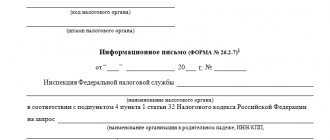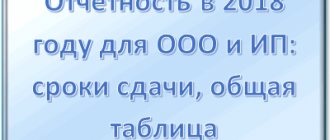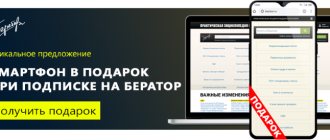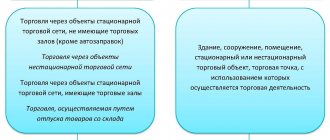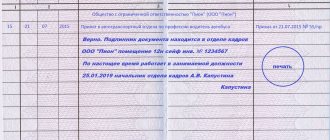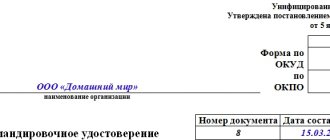The beginning of 2021 for agricultural producers applying a special tax regime (UST) brought the expected, but not the most pleasant surprise - from January 1, 2021, the law obliges this category of taxpayers to pay VAT according to generally established rates.
At the same time, subject to the conditions specified by law, agricultural tax payers can be exempted from paying VAT to the budget by submitting an application for exemption from VAT under the Unified Agricultural Tax to the inspectorate at the place of registration in 2021. In today’s article we will provide an explanation of how a business entity in this type of taxation can obtain an exemption from VAT, what conditions must be met for this, and how to apply for an exemption from VAT under the Unified Agricultural Tax in 2021.
Release under Art. 145 Tax Code of the Russian Federation
The Tax Code of the Russian Federation provides for the possibility of a taxpayer to obtain temporary exemption from VAT.
It is provided to those organizations and individual entrepreneurs who have received revenue not exceeding two million rubles for three months in a row. Calculate revenue according to accounting rules. It is determined minus value added tax. Newly created organizations have the right to apply the benefit. For them, the three-month period is determined taking into account the month of registration. If the company is registered in September, then take into account the revenue received in September, October and November for the calculation. Even if an organization or individual entrepreneur did not conduct business, they have the right to receive an exemption (letter of the Ministry of Finance dated August 23, 2019 No. 03-07-14/64961).
Notification for VAT exemption in 2021: submission conditions
Organizations and individual entrepreneurs who have chosen the OSN as their tax system can temporarily exempt themselves from calculating and paying VAT.
When organizations and companies are exempt from VAT:
- They do not create a purchase book.
- They do not calculate or pay VAT to the budget.
- They do not submit VAT reports.
- Invoices are generated without tax.
- Input VAT is included in the total purchase price.
It is worth noting that the exemption applies to transactions carried out within the country. When importing goods into Russia, you will have to pay VAT.
Of course, for this you need to meet several conditions:
- The volume of revenue excluding VAT should not exceed 2 million rubles for any of the last three months, without reference to quarters. When determining revenue, you need to take into account only those transactions that are subject to VAT.
- Revenue can range from zero to two million rubles.
- No excisable goods were sold in the previous three months.
- The company was registered more than three months ago.
If these conditions are met, then you need to fill out a notification in the form approved by Order of the Ministry of Finance of Russia dated December 26, 2021 No. 286n and submit it to the Federal Tax Service.
notifications on VAT exemption for individual entrepreneurs and LLCs via the link.
notifications on VAT exemption for individual entrepreneurs and LLCs (for agricultural producers) via the link.
Automate your accounting using the “My Business” online service. The service simplifies the preparation of invoices and invoices, reminds you of the dates of payments to the budget, helps send reports to the tax office, funds - and much more. No more trips to the tax office! Sign up today and get a 3 month free trial!
Try for free
Release under Art. 149 Tax Code of the Russian Federation
In addition to the benefits provided for in Article 145, the Tax Code identifies transactions that are not subject to VAT. Their full list is contained in Article 149. Non-taxable activities include:
- providing loans;
- transfer of goods, works, services for charitable purposes;
- transfer of promotional items for no more than 100 rubles;
- medical services;
- educational services provided by non-profit organizations (for example, schools);
- Bank operations;
- services in the field of insurance.
The listed operations are exempt from tax regardless of the company's revenue.
Why is there an additional notification form in 2021?
A document notifying the tax authority of the taxpayer’s decision to apply exemption from VAT payments under Art. 145 of the Tax Code of the Russian Federation, until 2021, existed in a single version, since it was in demand only in one situation - for persons using OSNO, but having small (not exceeding 2 million rubles without VAT for consecutive 3 months) sales turnover.
With the onset of 2021, VAT payers included agricultural producers working on the Unified Agricultural Tax (Clause 12, Article 9 of the Law “On Amendments...” dated November 27, 2017 No. 335-FZ). But at the same time, at the expense of agricultural tax payers, the circle of persons entitled to use the benefits provided under Art. 145 of the Tax Code of the Russian Federation (clause 1, article 2 of law No. 335-FZ).
Since the conditions limiting the right to VAT exemption for agricultural producers are characterized by a special set and do not imply the simultaneous (as for persons using OSNO) sending to the Federal Tax Service a package of documents confirming such a right, the information in the notification submitted under each of the regimes will vary significantly . For this reason, it became necessary to create a second form of notification of the start of using the benefit.
Validity period of the benefit
After notifying the Federal Tax Service about the application of the exemption, the company has the right not to pay VAT for 12 months. After the year has passed, notify the tax office of the extension of the grace period or the refusal of the benefit.
The taxpayer has the right to refuse to apply the exemption at any time. And sometimes you may lose the right to it. A particularly common cause of such loss is exceeding the revenue limit. Monitor compliance with the revenue limit closely throughout the grace period. As soon as it is exceeded, the organization is obliged to pay VAT on a general basis. The benefit is lost from the first day of the month in which the excess occurred.
How long does the benefit last?
Value added tax privileges are issued for one year. It is no longer possible to refuse its use during the entire period. But if the taxpayer violates the mandatory conditions for applying the benefit, then the VAT exemption is lost. The benefit will be denied if:
- the company began to sell excisable goods;
- Revenue over the last three months exceeded 2 million rubles.
From the month in which one of the specified events occurred, the taxpayer is obliged to calculate and pay VAT and report on it.
Unified agricultural tax payers do not have the right to refuse exemption even after 12 months. They lose the right to the benefit once they start selling excisable products. Or if the revenue exceeds the designated limit of two million.
How to get
To obtain an exemption from value added tax, you must submit to the inspectorate at your place of registration:
- notification in the form given in the order of the Ministry of Finance dated December 26, 2018 No. 286n;
- extract from the sales book;
- an extract from the balance sheet (individual entrepreneurs provide an extract from the book of income and expenses).
Notification form
There are no approved forms for extracts from the sales book and balance sheet. They are compiled in any form.
An extract from the sales book must contain summarized data on the amounts of transactions recorded over the last three months. And an extract from the purchase book shows monthly data on the amount of revenue for the same period.
You do not need to obtain permission to use the benefit from the Federal Tax Service.
How to fill out a notice for VAT exemption in 2021
There are no special instructions for filling out the notification. You need to fill out the header of the form, which indicates:
- name of the tax authority where the notification is submitted;
- Full name of the head;
- TIN and checkpoint of the organization;
- address and telephone number of the organization.
At the top, in a special field, you will need to indicate the name of the organization or full name of the taxpayer (if it is an individual entrepreneur).
Next, you need to write the date from which the application of the right to exemption begins in the format DD.MM.YY.
In paragraph one, you need to indicate the total amount of revenue for the last three calendar months, and then break it down monthly. In the second paragraph, you will need to clarify how many sheets of supporting documents are presented.
Next is the signature of the manager, chief accountant and date of completion.
Sample notice of VAT waiver 2021: sample
You can submit documents for VAT exemption in person to the Federal Tax Service. You can also send them by mail with a description of the attachment. Operational accounting services also support the notification function, so you can send a notification electronically.
In the article, we examined the conditions for applying the right to exemption from VAT, and also learned how to fill out and submit a notification. Please remember that you cannot voluntarily waive this right within 12 months. Therefore, weigh the pros and cons before making a decision.
VAT in the “transition period”
Before applying the exemption, you need to restore the VAT previously accepted for deduction on all of your remaining inventory, fixed assets and intangible assets that were purchased for operations subject to VAT. This must be done in the last quarter, that is, when you are still a VAT taxpayer.
If you have under-depreciated fixed assets, then VAT must be restored on their entire residual value.
Attention! Before switching to VAT exemption, you need to restore VAT on the cost of inventories, fixed assets and intangible assets.
VAT paid on advances received can no longer be deducted after the exemption begins to apply. This can only be done while you are still subject to VAT if your customers agree:
(or) to terminate the contract and return the advance payment in full;
(or) to amend the terms of the contract price and return only the amount of advance VAT to them.
If you cannot reach an agreement with the buyer, you will have to issue an invoice including VAT upon shipment. But there is no need to pay tax to the budget a second time (you have already paid it in advance). If the advance was partial, then upon shipment you need to pay VAT on the unpaid part.
Results
At the beginning of 2021, agricultural producers using the Unified Agricultural Tax were added to VAT payers. At the same time, they have been given the opportunity to exercise their right to VAT exemption. The rules for granting and applying such exemption are included in the text of Art. 145 of the Tax Code of the Russian Federation, which was previously valid only for persons using OSNO. These rules differ significantly in a number of ways from those in force under OSNO.
The need to indicate different grounds for applying the benefit and the absence of the need for agricultural producers to submit documents confirming their right to it have led to the creation of different forms of notification through which the taxpayer notifies the tax authority of the VAT exemption.
Mandatory forms for both notifications (the new one for Unified Agricultural Tax payers, the updated one for those using OSNO) will come into effect from 04/01/2019. Until this moment, agricultural producers can draw up a notification in any form or on a form recommended by the Federal Tax Service of Russia, identical to the one that will become mandatory from 04/01/2019. For persons using OSNO, until the updated form comes into force, the original form of this document continues to be used. You can find more complete information on the topic in ConsultantPlus. Free trial access to the system for 2 days.
Reasons
An individual entrepreneur and an enterprise that produces these products can be exempt from paying tax.
At the same time, exemption from payment is not an obligation, but a right, and almost all organizations can take advantage of it. Thanks to this, companies will be able to avoid paying taxes. The main and only condition for this is the absence of VAT in invoices.
Companies have the right to pay taxes throughout the year. The exemption takes effect upon submission of documents. Once the right is exercised, the company may choose not to file tax returns or pay taxes to the government. As soon as the right has arisen, do not forget that the invoices are marked “Without VAT”. During the entire exemption period, the company must confirm its rights.
To be exempt from payment:
- 3 months before the expected date of filing the application, the enterprise’s revenue from the sale of goods should not exceed 2,000,000 rubles;
- it is necessary to keep records of the sale of goods, including excisable and non-excise ones.
If a company sells excisable and non-excise goods, then it has the right to exercise the right to exemption. However, non-excise ones are not automatically subject to such tax.
It often happens that an institution complies with all of the above conditions, but cannot be exempt from tax. Organizations that have been trading only excisable goods for three months have the right to be exempt from payment. These include:
- alcohol;
- beer;
- tobacco and tobacco products;
- petrol
- cars.
All goods are specified in Article 181 of the Tax Code of the Russian Federation.
What to do with the VAT return?
For the period during which the VAT exemption was applied, declarations are not provided.
If the exemption is applied from the first month of the quarter, then the restored VAT is included in the declaration for the last quarter preceding the application of the exemption.
If the exemption applies from the second or third month of the quarter, then the declaration for this quarter must be submitted according to the general rules. In this case, the declaration reflects only transactions for the period of the first quarter before the start of application of the exemption. Such a declaration also includes the restored VAT.
Unified agricultural tax and VAT under this special regime from 2021
The abbreviation "Unified Agricultural Tax" is used to abbreviately indicate one of the special tax regimes - the Unified Agricultural Tax, applied to taxpayers whose business is related to agricultural production. These can include both organizations and individual entrepreneurs.
Just like other special tax regimes, the Unified Agricultural Tax is equivalent to a number of taxes - on corporate profits, on property, and personal income tax for individual entrepreneurs.
From 01/01/2019, in accordance with paragraph 5 of Article 9 of Law No. 335-FZ of November 27, 2017, Unified Agricultural Tax payers will have to pay VAT to the budget, while being able to apply deductions for this tax, or can submit notifications of exemption from its mandatory payment.
What happens if you do not provide documents for release?
If the taxpayer does not submit a Notice of transition to exemption and extension of the exemption period for the next 12 months, then he will not lose the right to work without VAT.
However, it is worth filing a notice to avoid blocking accounts due to the fact that the tax authority was not notified of the taxpayer's use of the exemption.
If the taxpayer does not provide documents confirming the legality of the application of the exemption, then he loses the right to this exemption for the entire period of its application. In this case, it is necessary to charge additional VAT, pay penalties and fines.
Which 2019 notification forms for VAT benefits are used for OSNO
Order No. 286n approved not only the notification form for agricultural producers, but also an updated version of a similar document used to report the application of the exemption by persons on OSNO. The use of the updated notification form will also become mandatory from 04/01/2019.
Until Order No. 286n comes into force (i.e., during the 1st quarter of 2021), the notification form approved by Order of the Ministry of Taxes of the Russian Federation dated July 4, 2002 No. BG-3-03/342 continues to be valid.
The following has been updated on the form:
- The title includes an indication that it is intended for VAT payers with the exception of agricultural producers using the Unified Agricultural Tax.
- In clause 1, a clarification has been added regarding the indication of the amount of revenue excluding VAT.
- The text of subp. has been replaced. 2.4 - now it contains a reference to the book of income and expenses compiled under the simplified tax system. It will be required from payers who have switched from this regime to OSNO.
- Added sub. 2.5, which includes in the list of submitted documents the book of income and expenses compiled under the Unified Agricultural Tax - for payers who have switched to OSNO from the Unified Agricultural Tax.
- From clause 3, the reference to excisable mineral raw materials is excluded.
That is, no innovations requiring a fundamentally different approach to the filling procedure appeared in this document. This is explained by the fact that there are no changes to the rules for obtaining VAT benefits for persons using OSNO when adjusting the text of Art. 145 of the Tax Code of the Russian Federation have not been included.
For an example of filling out the updated form for notification of VAT exemption when applying OSNO, see our website.
Peculiarities
Each tax system has its own characteristics when exempting from VAT.
With simplified tax system
In accordance with Chapter 26.2 of the Tax Code of the Russian Federation, a taxpayer has the right to take advantage of the exemption, but only if certain conditions are met when transferring to another tax system.
The use of the simplified tax system allows organizations to be exempt from paying income tax, property tax and social tax. Such companies are not recognized as VAT taxpayers.
An exception is this tax when importing goods into the customs territory of Russia. It is precisely this exemption that raises quite a few questions for organizations that pay taxes under the OSNO system.
Availability of declaration
Having a zero declaration also exempts you from paying value added tax. The main thing is that the invoices indicate “Without VAT”. But not many companies work according to such a system when delivering goods. Therefore, before receiving release, it is necessary to prepare in advance.
When importing equipment
When importing equipment, all companies, even those on the “simplified” market, must pay value added tax. This resolution is already actively operating in the territory of the state.
Partial release
Partial exemption is applicable for organizations that carry out several types of work. At the same time, they can count on tax exemption for one type of activity. To do this, they must comply with all the requirements specified in the current bill, including providing a zero declaration.
On UTII
Companies and individual entrepreneurs who pay a single tax are not VAT payers, in accordance with Chapter 21 of the Tax Code of the Russian Federation. An exception is VAT, which is payable in accordance with the Tax Code when importing goods to Russian customs.
If a company operates according to a general scheme, then only part of its operations may be exempt from payment.
Medical equipment
In accordance with the Tax Code, medical equipment described in Decree of the Government of the Russian Federation No. 1042 of September 30, 2015 is not subject to taxation.
The rest of the list is entitled to be subject to value added tax.
If you withdraw VAT deductions based on a tax letter, will you be fined?
If you remove the deductions yourself, pay attention once again to Part 4 of Article 81 of the Tax Code of the Russian Federation!
According to the rules of this article, exemption from a fine for understatement of tax is possible only if an update is submitted before the taxpayer learns that the tax authority has discovered non-reflection or incompleteness of information in the tax return, as well as errors leading to an understatement of the amount of tax payable .
An information letter from the tax office with a proposal to remove VAT deductions and/or expenses is clear for Article 81 of the code - the tax office knows and informs you that you have illegally underestimated the tax base and, accordingly, underestimated the tax amount.
Your actions to “independently assess” the tax in the clarification of the tax office’s “recommendation” in the information letter are your agreement with the tax authorities’ arguments in its information letter. How do you confirm that the tax office learned about the incomplete reflection of the tax before you submitted the clarification.
True, if you submit a clarification, you will have one more question: you will be charged under Part 1 of Article 122 of the Tax Code with a fine of 20%, or under Part 3 - by 40%, for deliberate actions aimed at understating the amount of tax through interaction with an organization - dubious counterparty, problematic counterparty, fly-by-night.
Limitation period
The limitation period is three years from the date it starts. What does it mean? Within three years from the date the limitation period began to expire, the tax authorities have the right to bring claims against the taxpayer in court.
If the taxpayer actively interferes with tax authorities, avoids inspections, and does not provide the relevant documents, then the Tax Code, clause 1.1 of Art. 113 of the Tax Code, Part I allows you to suspend the limitation period. To suspend the statute of limitations, the tax authorities must draw up an act on preventing tax officials from conducting a tax audit. Such an obstacle may be a ban on access to the office premises of tax authorities. From the date of drawing up and signing the act, the suspension of the limitation period begins. And this suspension lasts until the tax authorities are allowed to carry out the appropriate tax audit.
Deadlines
The exemption is valid for a year.
The period starts counting from the month of filing the application. If the rules are violated, for example when revenue is exceeded, the payer pays the full tax. Payment is made after filing the declaration and violating the conditions. The tax is paid to the state budget, taking into account the amount of penalties. It is calculated independently. For correctness, you can use the calculator posted on the website of the Federal Tax Service nalog.ru.
Payment must be made prior to filing the return or a late payment penalty may be assessed.
Taxpayer Responsibilities
Taxpayers are required to submit returns by the 20th day of the month following the reporting year. If an organization wishes to receive an exemption, it must send an application by mail no later than 6 days before the deadline for submitting the application, that is, before the 14th. In addition to this you need:
- pay taxes on time;
- register with the tax authorities;
- submit the declaration within the specified period of time;
- enter information about your activities;
- provide other necessary documents;
- comply with tax requirements when violations of tax legislation are detected;
- for 4 years, retain all supporting documentation regarding the expenses and income of the organization;
- other obligations that are described in the tax bill.
